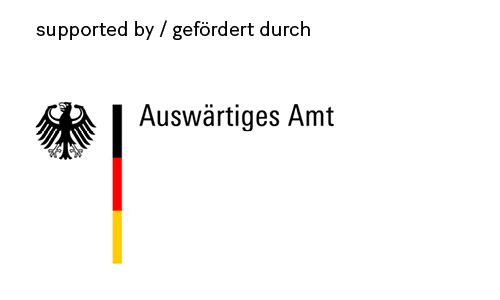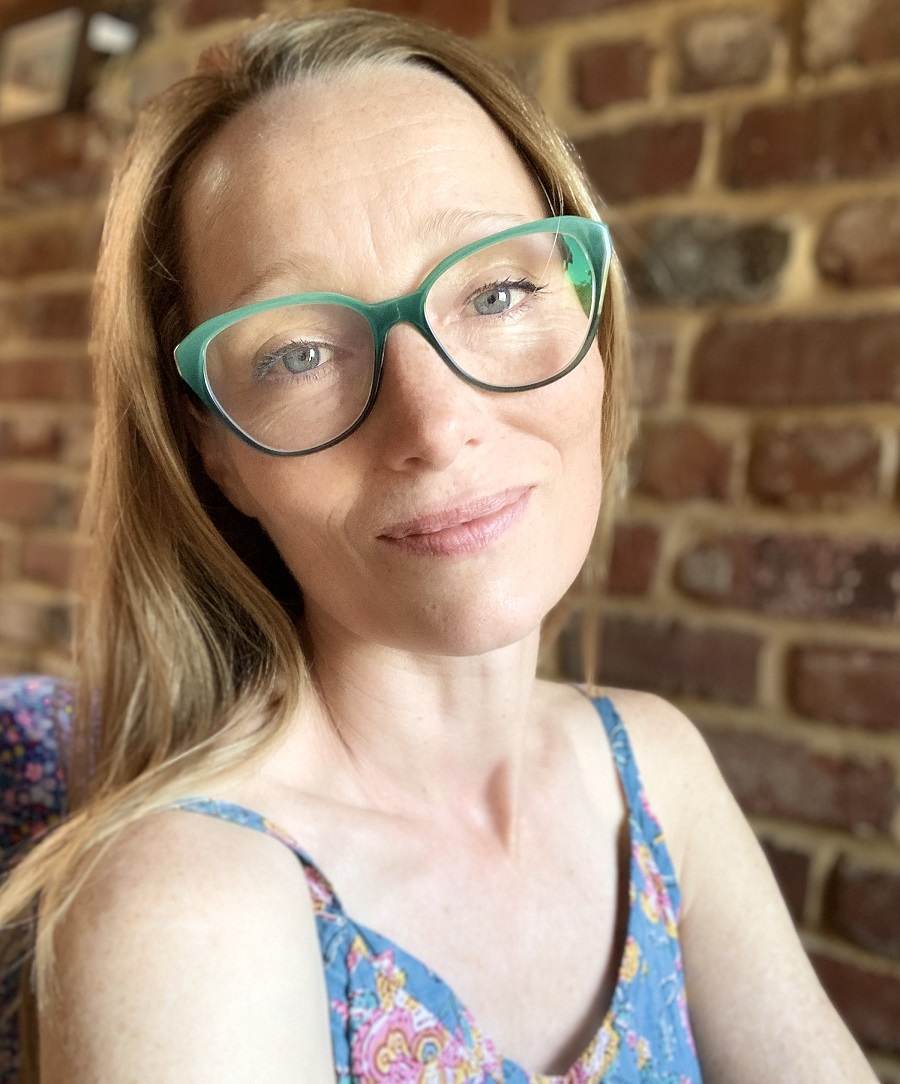The Witnessing
It is frog season in South-Western Western Australia. I know it because the motorbike frogs that live in my dad’s pond have begun their nightly ruckus.
Motorbike frogs are an endangered species endemic to a tiny sliver of Australia that encompasses the Perth Metropolitan Area. Urban growth and climate change are impacting the lakes and wetlands that are their habitat.
The male’s mating call sounds like a motorbike changing gears, followed by a pause and a guttural “ribbit”. I can imitate it to perfection, much to the chagrin of the male frogs, who, nonplussed at the competition, puff out their wee chins to ribbit even louder. It all leads to the same thing: a stack of frogs with a large female underneath and two or three small males on top.
“Mummy, Mummy, the frogs are playing piggy backs!” squealed my daughter the first time she saw them like that, then rushed off to fetch the neighbourhood kids.
During our summer visit a few years ago, we saw a mother frog lay hundreds of eggs, which floated in a transparent goo on the surface of the pond, while four goldfish gorged on them. Unable to stand by and watch, we rescued the last seven eggs and put them in an ice-cream container. Experts say Australian frog populations have been declining since the 1980s. I figured we could give seven froglets a helping hand. And, I thought, what a wonderful opportunity for my daughter, who had spent most of her life in a high-rise apartment in Brazil, to bear witness to the tiny lives that share the planet with us.
Over the following weeks, we watched them grow. Tiny black dots became tiny fish, which morphed into pot-bellied tadpoles with crepe-paper mouths. Then they grew legs, which trailed behind them until they learned what to do with them. At ten weeks, you could see a bulge where their arms were growing under their skin. We were anxious to see them erupt, but tadpoles develop faster or slower depending on their environment and the imminence of danger. Ours were living the high life and in no hurry.
Two days before we left, we did a test run to see if they’d be OK in the pond. We put three in the water. It was the first time we’d ever touched them, despite my daughter’s repeated attempts to pat them. Their little bodies were so delicate in our hands.
Two came to the surface and stared at me. “Get me out of here!” they seemed to be saying. They swam into my hand and I returned them to the aquarium.
The third swam deep into the pond before coming to rest on a stump in the middle. The goldfish circled her, mouths opening and closing, then left.
That night we put them all in the pond and in the morning we saw that their arms had erupted, no doubt brought on by the imminent danger of their new pondmates.
Over the next few weeks, according to what I’d read, they would stop eating while their tails were reabsorbed into their bodies and their lungs would develop so that they could breathe air instead of water.
I tried to touch one, but it turned and swam away. They were wild things again.
Yesterday, a mother frog laid hundreds of eggs in the pond.
Die Zeugenschaft
Es ist Froschsaison im Südwesten Australiens. Ich weiß das, weil die Motorradfrösche, die im Teich meines Vaters leben, jetzt nachts Krawall machen.
Motorradfrösche sind vom Aussterben bedrohte. Es gibt sie nur in einem kleinen Teil Australiens, dem Großraum Perth. Das Wachstum der Stadt und der Klimawandel wirken sich auf die Seen und Feuchtgebiete aus, die ihr Lebensraum sind.
Der Paarungsruf des Männchens klingt wie ein Motorrad, das den Gang wechselt, gefolgt von einer Pause und einem Quaken. Ich kann das perfekt nachahmen – sehr zum Leidwesen der männlichen Frösche. Verblüfft über die Konkurrenz pusten sie dann ihr kleines Kinn auf, um noch lauter zu rufen. All das führt immer zum gleichen Ergebnis: einem Stapel Frösche mit einem großen Weibchen unten und zwei oder drei kleinen Männchen oben.
„Mama, Mama, die Frösche spielen Huckepack“, quietschte meine Tochter, als sie sie das erste Mal so sah. Dann lief sie los, um die Nachbarskinder zu holen.
Vor einigen Jahren waren wir im Sommer da und beobachteten eine Froschmutter, wie sie Hunderte von Eiern legte. Der durchsichtige Glibber schwamm dann auf der Oberfläche des Teiches und vier Goldfische fraßen davon. Wir konnten nicht zusehen, retteten die letzten sieben Eier und legten sie in einen Eisbecher. Experten sagen, dass die australischen Froschpopulationen seit den 1980er Jahren zurückgehen. Ich dachte also, wir könnten sieben Fröschlein helfen. Und ich dachte, was für eine wunderbare Gelegenheit für meine Tochter, die den Großteil ihres Lebens in einem Hochhaus in Brasilien verbracht hatte. Sie würde nun diese winzigen Wesen erleben können, die die Erde mit uns teilen.
In den folgenden Wochen sahen wir zu, wie sie wuchsen. Aus winzigen schwarzen Punkten wurden winzige Fische, die sich in dickbäuchige Kaulquappen mit Krepppapiermündern verwandelten. Dann wuchsen ihnen die Hinterbeine, die sie erst mit sich rumschleppten, bis sie lernten, was sie damit anfangen sollten. Mit zehn Wochen konnte man eine Wölbung erkennen, wo sich ihre Vorderbeine unter der Haut bildeten. Wir wollten sie unbedingt ausbrechen sehen, aber Kaulquappen entwickeln sich je nach Umgebung und drohender Gefahr schneller oder langsamer. Unsere lebten sehr gut und hatten es nicht eilig.
Zwei Tage vor unserer Abreise probierten wir etwas aus. Wir wollten wissen, ob der Teich für sie okay wäre. Wir setzten drei hinein. Es war das erste Mal, dass wir sie berührten, obwohl meine Tochter sie schon oft streicheln wollte. Ihre kleinen Körper waren so zart in unseren Händen.
Zwei kamen an die Oberfläche und starrten mich an. „Hol mich hier raus“, schienen sie zu sagen. Sie schwammen in meine Hand und ich brachte sie ins Aquarium zurück.
Ein Froschweibchen schwamm tief in den Teich, bevor sie auf einem Baumstumpf in der Mitte zur Ruhe kam. Ein Goldfisch umkreiste sie, öffnete und schloss sein Maul und schwamm dann davon.
In dieser Nacht setzten wir sie alle in den Teich und am Morgen sahen wir, dass ihre Arme ausgebrochen waren – zweifellos aufgrund der unmittelbaren Gefahr, die von ihren neuen Mitbewohnern ausging.
Ich hatte gelesen, dass sie in den nächsten Wochen nichts essen würden. Ihre Schwänze würden sich zurückbilden und ihre Lungen entwickeln, damit sie an der Luft statt unter Wasser atmen konnten.
Ich versuchte, einen der Frösche zu berühren, aber er drehte sich um und schwamm davon. Sie waren wieder wilde Tiere.
Gestern legte eine Froschmutter Hunderte von Eiern im Teich.
Übersetzung: Iris Thalhammer
Com os próprios olhos
Chegou a estação das rãs no sudoeste da Austrália. Sei disso porque as “rãs-moto” (Litoria moorei, “motorbike frog” em inglês) que moram no lago ornamental do meu pai começaram a causar tumulto toda noite.
A rã-moto é uma espécie ameaçada de extinção e endêmica de uma faixa estreita da Austrália que engloba a área metropolitana de Perth. O crescimento urbano e as mudanças climáticas estão afetando as lagoas e os pântanos, seu habitat natural.
O chamamento do macho para o acasalamento é parecido com o som da mudança de marchas em uma moto, seguido de uma pausa e o “croac” gutural. Consigo imitar perfeitamente esse som, para o desgosto das rãs macho que, perplexas com a competição, preparam o papo para coaxar ainda mais alto. O resultado é sempre o mesmo: uma pilha de duas ou três rãs macho pequeninas em cima de uma rã fêmea mais avantajada.
“Mamãe, mamãe, as rãs estão brincando de cavalinho!”, a minha filha gritou de alegria quando viu a cena pela primeira vez e logo saiu correndo para chamar a criançada da vizinhança.
Há alguns anos, de visita durante as férias de verão, vimos a rã-mãe depositando centenas de ovinhos numa gosma transparente na superfície do laguinho, enquanto quatro peixinhos dourados faziam um banquete. Não conseguimos ficar assistindo àquilo, então resgatamos os últimos sete ovinhos e os guardamos em um pote de sorvete. Os especialistas dizem que a população de rãs na Austrália está em declínio desde a década de 1980. Achei que poderíamos dar uma mãozinha para aquelas sete rãzinhas. Pensei: “Que oportunidade maravilhosa para a minha filha!” Ela passou grande parte da vida dentro de um apartamento em um arranha-céu no Brasil e estava conhecendo, com os próprios olhos, aquelas vidas que dividem o planeta conosco.
Nas semanas seguintes, acompanhamos o crescimento delas. Os pontinhos negros viram peixinhos, que se transformam em girinos de barriga inchada e boca enrugada igual papel crepom. Logo aparecem as pernas, que ficam meio molengas na parte traseira até as rãs aprenderem a usá-las. Na décima semana, dá para ver uma saliência onde os braços estão se desenvolvendo debaixo da pele. Estávamos morrendo de ansiedade para ver os bracinhos expostos, mas os girinos crescem mais rápido ou mais devagar de acordo com o ambiente e o perigo iminente. Os nossos estavam levando uma vida boa e não tinham pressa de crescer.
Dois dias antes de partirmos, fizemos um teste para ver se os girinos conseguiriam se adaptar ao lago. Colocamos três deles na água. Foi a primeira vez que pusemos as mãos neles, apesar de a minha filha ter tentado fazer carinho várias vezes. Aqueles corpinhos pareciam tão frágeis nas nossas mãos…
Dois voltaram para a superfície da água e olharam para mim. “Me tira daqui!”, pareciam dizer. Nadaram de volta para a minha mão, e eu os coloquei num aquário.
O terceiro mergulhou fundo no lago antes de descansar em um toco no meio da água. Os peixes dourados ficaram rondando a rã, abrindo e fechando a boca, antes de se afastarem.
Colocamos todos eles no laguinho naquela mesma noite e, na manhã seguinte, vimos que os bracinhos estavam expostos, o que com certeza deve ter sido provocado pelos novos vizinhos de lago, que representavam um perigo iminente.
Nas próximas semanas, de acordo com as minhas pesquisas, as rãs parariam de comer, enquanto as caudas seriam reabsorvidas pelo corpo e os pulmões se desenvolveriam para elas poderem respirar ar, em vez de água.
Tentei tocar numa delas, mas ela se virou e nadou para longe. Eram criaturas selvagens novamente.
Ontem, uma rã-mãe depositou centenas de ovinhos no lago.
(Traduzido do inglês por Rafa Lombardino)
Teilen












